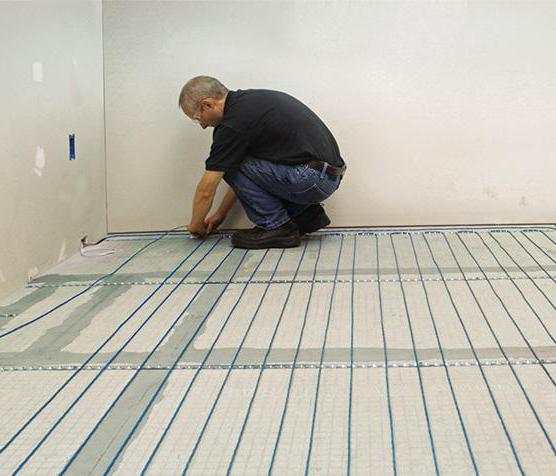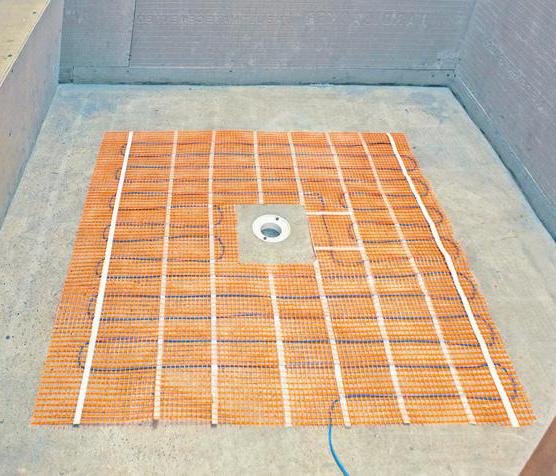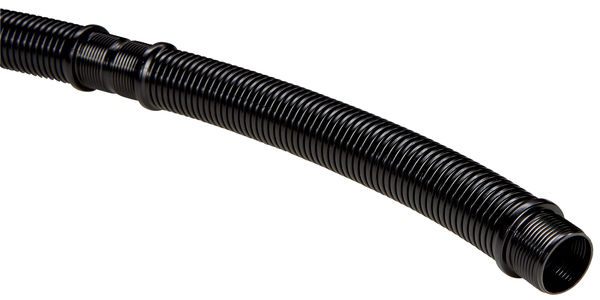Cable laying in the floor: step-by-step instruction, technology and recommendations
Cable laying in the floor is already used fairlylong. Such a system allows not to disturb the aesthetic appearance of the premises, to hide all connections and wires, as well as to equip the warm floor. To avoid mistakes in this operation, it is necessary to know several important moments of installation of the structure. In addition, you should first determine the pros and cons of such a facility, as well as find out its relevance to the specifics of your home or business.

General Information
Laying the cable in the floor screed assumes itinstallation in corrugated pipe. This will avoid damage to the wiring during the grouting. In terms of thickness, the concrete above the corrugated tube should rise several centimeters. The distance to the walls is about 150 millimeters to avoid deformation when installing skirting boards. Before the bay of the screed, it is necessary to draw up a wiring layout. It is desirable to note exactly all sizes. This will allow you to work safely when you need to drill a floor or carry out similar work.
Advantages
Cable laying in the floor provides increasedsafety of the serviced premises. This is due to the fact that the construction in question does not require the installation of wall junction boxes, and this excludes their accidental damage. The use during the installation of expensive diamond equipment greatly simplifies the entire procedure for the arrangement of the complex. This saves time and labor costs.
For the operation under consideration, notIt requires the strobing of walls and other areas of the interior. Cable laying in the floor is carried out simply by installing the electrical wiring according to the scheme provided, after which the entire system is poured with cement mortar. The user can not get to the parts of the wires, there is no possible injury.

Features
Cable laying in the floor has a number of characteristic features:
- The minimum thickness of the screed is at least 30 millimeters from the cable sheath.
- Wiring is only carried out in special boxes.
- It is not required to expand the openings or finish the elements of the apartment.
- The cable is affected by the destructive power of concrete-cement mortar, and therefore additional protection is used in the form of a shell of polymers.
The main disadvantage of this constructionis the need to dismantle the flooring and screed in the event of repair works of established communications. This is due to additional inconveniences and costs.
Another drawback of implementing the gasketcable in the floor - high cost. For work, a special tool with diamond dusting, skills of using or hiring specialists will be required. In addition, for each outlet it will be necessary to organize a separate wire, which takes a decent amount of time and labor.
Application
Cable laying under the floor is most often done inliving quarters. Two mounting options are used: shtroby and screed. In the first case, the wires are installed in the walls, masked in special grooves (stitches). The method in question (in the floor) is the laying of the wiring on the substrate and its subsequent pouring with a solution.

Cables must be carried out inmounting corrugated pipes. The optimum option will be modifications with a probe, which greatly facilitate the installation. Instead of them it is permissible to use metal hoses that are oriented to operation in industrial and other non-residential premises. Gofra has sufficient strength and electrical safety, while taking into account the increase in the cost of work.
If the laying of cables in pipes in the floor goes throughmetal rigid structures, such a system is called closed wiring. Most often it is used in floors and suspended ceilings. The drawbacks of the method include the lack of flexibility and the use of additional mounting elements. Pros - reliability, protection from mechanical deformations.
Step-by-step instruction
Below are the stages of work on laying the cable in the concrete floor:
- First make the markings of electrical points. This is necessary to select the location of the sockets, taking into account the length of the wires supplied to them, and the thickness of the future screed.
- At the second stage, the length of the pipes into which the cable is pulled is measured.
- The third stage involves the installation of pipes on the base and covering them with reinforcing mesh by fixing them to the clamps.
- Further, the concrete solution is poured, after which the screed is leveled.
- With the help of the plaster mixture, close the boxes and pipes.
- The final step is the installation of sockets and switches.

Protective measures
Standards for cable laying in the floor assumepossibility of monolithic wiring of non-replaceable type. However, the best option will be the installation of pipes, which will make it possible, if necessary, to replace or repair the damaged part of the line.
In an apartment this construction requiresde-energizing neighbors. If you can reconcile with them the mutual replacement of the old wiring with a new option, the problem disappears. However, if the tenants refuse to shift their line, it is advisable to secure their branches with additional boxes or pipes, after which they already fill the screed.
Checking hosts
Do not leave twists in the floor of the wires. This is fraught with current damage when pouring the working mixture. Elements should be sealed using tight couplings. It should also be taken into account that the further efficiency of the power supply system depends on the quality of the connection of the wires.
After full implementation of cable laying on the floor in the apartment should be a set of control measures. They include:
- Visual inspection.
- Performing measurements of the correctness of the indications of the "phase-zero" circuit taking into account the characteristics of the protective apparatus and the conductor.
- Check for contact between grounding parts.
- Testing of automatic and controlled switches.
- Measuring the resistance level of insulation windings.

Recommendations
Installation of hidden wiring under the floor must be made with a cable stock. This will avoid problems with damage or the need to add a portion of the wire.
All structural elements are checked for operability before filling. Otherwise, some defects will be fixed very difficult and costly.
The connecting points are carefully insulated,despite the presence of a protective tube. The safety boxes must have the necessary safety margin to withstand the weight of the solution and do not deform at the same time. The quality of the protective tubes depends on the manufacturer and the material. Select follows the proven manufacturers, not being tempted by cheap, but dubious counterparts.
When wiring cables in the middle of a concrete floor, try not to touch the wiring terminals until the screed is completely solidified.
Wiring in draft mode mustprovide for the exclusion of overlapping cables between each other. Otherwise there is an increase in the thickness of the screed, which entails excessive material consumption and problems in installing doorways.
The arrangement of the system in the wooden floor will be more reliable if you drill holes in the lags than conduct the wiring under them.

Useful information
The following information will allow you to learn how to avoid incomprehensible situations and problems when laying a warm floor cable:
- Installation of distribution blocks with control covers is the best method to prevent a complete opening of the screed in case of damage to the wiring or its components.
- It is more difficult to equip the hidden wiring through the floor inapartment. This is due to the need to maintain a certain height screed. In private houses there is no such problem - the lower floor can be adjusted as necessary, and the floors of the upper levels, as a rule, are designed for installation of the construction in question.
- Since reinforcement is placed on top of the wiring, it is necessary to check before filling that the grid has not damaged the wires.
- Wooden floor before the procedure is desirableadditionally treated with special compounds that reduce the combustibility of wood. In such constructions it is recommended to exclude twisting completely, and in concrete execution it is also better to minimize them. Any such bundle represents an additional risk in operation.
- Do not forget to make and save the wiring diagram. If it is necessary to conduct drilling or other jobs that violate the integrity of the floor, it will help not to damage the hidden wiring.
- The branch points of the conductors of the cables must be insulated in accordance with the analogous winding of the whole analogues.
- Pipe wiring is desirable to do a replacement type. In construction sites - it's an open type, and in skirting boards and boxes - a closed way.
- In rooms with a high moisture content, as well as in attics and in ventilation chambers, the system must be installed in an open method.
- In non-residential buildings erected from non-combustible materials, it is allowed to lay cables in a monolithic, non-replaceable way. It is mounted directly in the niches of partitions and screed.

Let's sum up the results
Cable laying in the floor is becoming more popularamong the owners of not only private houses, but also apartments. It is easy to use, easy to install, and highly secure. In addition, there is no need to use interlocking units and special plugs. The whole process of connection can be done directly in the sub-space. Despite all the advantages, hidden wiring in the floor is an ambiguous prospect. Its arrangement requires professionalism, and also complicates the subsequent repair of cables.
</ p>







